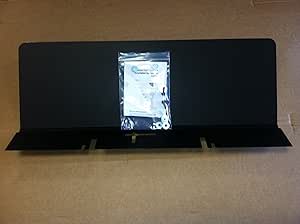As humanity advances into the cosmos, the quest for planetary exploration and protection becomes increasingly vital. One of the key components in safeguarding planetary bodies, particularly Earth, from various environmental threats is the mantle heat shield. This article delves into the intricate role of mantle heat shields in planetary protection, their mechanisms, and their implications for future explorations.
What is a Mantle Heat Shield?
A mantle heat shield is a geological layer that helps regulate the temperature of a planet’s surface and plays a crucial role in its overall stability and habitability. These shields are primarily composed of silicate minerals and are found beneath the crust, forming a part of a planet’s mantle. Their function can be likened to a thermal blanket, moderating extreme temperatures and protecting the planet from both internal and external threats.
The Importance of Mantle Heat Shields

Mantle heat shields are essential for several reasons:
- Temperature Regulation: They help maintain a stable thermal environment, which is crucial for sustaining life.
- Protection from Meteoric Impacts: Mantle heat shields can absorb some of the energy from incoming meteoroids, reducing the risk of catastrophic damage.
- Volcanic Activity Management: They play a role in controlling volcanic eruptions by regulating the heat and pressure buildup within the mantle.
- Geological Stability: By preventing excessive heat build-up, they contribute to the stability of tectonic plates and the overall geological health of a planet.
How Mantle Heat Shields Operate

The operational mechanism of mantle heat shields is based on their physical properties and geological processes:
- Convection Currents: The mantle’s heat is transferred through convection currents, where hot material rises and cooler material sinks. This process helps distribute heat evenly across the planet.
- Thermal Conductivity: Mantle materials possess specific thermal conductivity properties that allow them to absorb and dissipate heat effectively.
- Melting and Solidification: The mantle can partially melt in certain areas, creating magma that can flow towards the crust, affecting volcanic activity and surface temperatures.
Case Studies: Earth and Mars
To understand the practical implications of mantle heat shields, let’s examine two contrasting planetary bodies: Earth and Mars.
Earth: A Robust Mantle Heat Shield

Earth’s mantle is a prime example of an effective heat shield. The planet’s geological activity, powered by its mantle, has created conditions conducive to life:
- Plate Tectonics: The movement of tectonic plates is driven by the convection currents within the mantle, leading to a dynamic environment that supports diverse ecosystems.
- Volcanism: Volcanic eruptions, while potentially destructive, are also vital for releasing gases such as carbon dioxide, which help regulate the planet’s climate.
- Impact Protection: The mantle helps absorb some energy from meteoric impacts, which have shaped the Earth’s surface throughout history.
Statistics indicate that Earth’s mantle has played a crucial role in maintaining an average surface temperature of approximately 15°C (59°F), allowing for liquid water to exist—a fundamental requirement for life.
Mars: A Weak Mantle Heat Shield

In contrast, Mars presents a different picture. The Red Planet’s mantle lacks the same level of geological activity and heat regulation:
- Thinned Atmosphere: Mars has a significantly thinner atmosphere, which offers less protection against cosmic radiation and temperature fluctuations.
- Volcanic Dormancy: The Martian mantle is largely inactive, with no significant volcanic activity recorded for millions of years, leading to extreme temperature variations.
- Surface Conditions: Average temperatures on Mars hover around -63°C (-81°F), making it inhospitable for life as we know it.
These differences underscore the importance of a robust mantle heat shield in sustaining habitable conditions.
Implications for Future Space Exploration

Understanding the role of mantle heat shields has profound implications for future space exploration and planetary colonization:
- Selection of Targets: Knowledge of a planet’s mantle characteristics can inform decisions regarding potential targets for human exploration and settlement.
- Resource Management: Understanding heat shield dynamics can aid in the sustainable management of planetary resources, such as geothermal energy.
- Risk Assessment: Assessing the effectiveness of a planet’s mantle heat shield can help in evaluating risks associated with meteoric impacts and volcanic activity.
Space agencies, like NASA and ESA, are already incorporating geological studies into their mission designs. For instance, the Mars 2020 Perseverance Rover is equipped with tools to study Martian geology, including its mantle, to better understand its past habitability.
The Future of Mantle Heat Shields in Planetary Protection

The future of planetary protection will increasingly rely on our understanding of mantle heat shields. As we venture further into the solar system and beyond, the need for robust protective mechanisms on other planets will be paramount. Here are some considerations for future research and exploration:
- Advanced Modeling: Developing sophisticated models to simulate mantle dynamics and heat distribution could enhance our understanding of planetary processes.
- Interdisciplinary Approaches: Collaborating across geology, climatology, and astrobiology fields can yield insights into how mantle heat shields affect planetary habitability.
- Technological Innovations: Innovations in materials science may lead to the development of artificial heat shields for spacecraft and potential habitats on other planets.
The role of mantle heat shields in planetary protection is a critical aspect of understanding not only our planet but also others in our solar system. Through the examples of Earth and Mars, we see how these geological features influence habitability and environmental stability. As we continue to explore the cosmos, the implications of mantle heat shields will guide our missions and inform our strategies for sustaining life beyond Earth. The future of planetary exploration hinges on our ability to harness this knowledge effectively, ensuring that we protect not only our planet but also the potential for life on others.